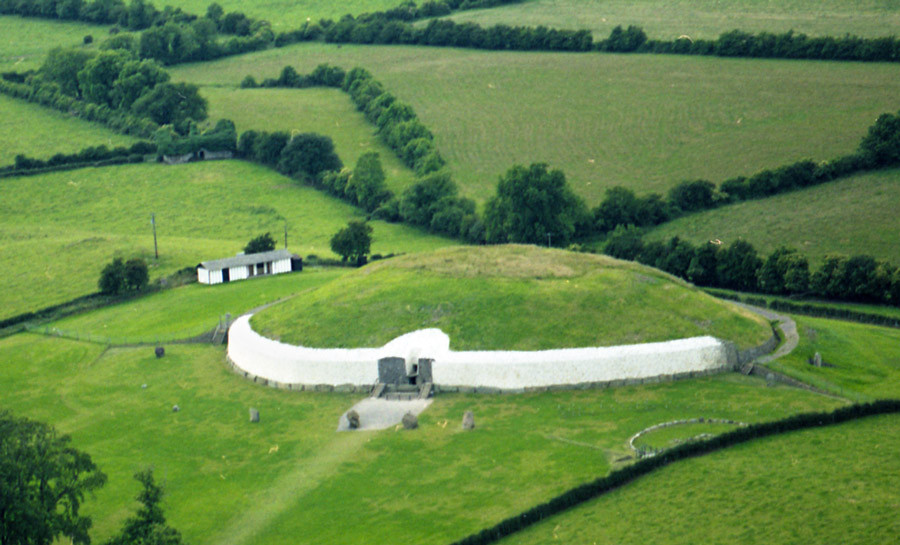 If you’re planning a trip to Ireland, don’t miss a visit to Newgrange. Located in the county of Meath, north of Dublin, it is one of the country’s most extraordinary ancient monuments.
If you’re planning a trip to Ireland, don’t miss a visit to Newgrange. Located in the county of Meath, north of Dublin, it is one of the country’s most extraordinary ancient monuments.
Newgrange dates back to around 3,200 BC, hundreds of years before the construction of both Stonehenge in Britain and the Pyramids of Giza in Egypt. While Newgrange may not be as widely known, it represents a notable feat of Neolithic engineering.
But what exactly is Newgrange? It is most commonly referred to as a passage tomb, comprised of a large circular mound built up of rock and stone, with a passageway and chambers inside where the bones of the dead could be laid to rest. The exterior of the mound is lined with engraved standing stones, which were possibly added later during the Bronze Age.
While the people of the Stone Age who constructed the mound were likely working only with simple tools made of stone or wood, the structure has proven remarkably sound. For over 5,000 years, the interior passages have remained completely waterproof.
One of Newgrange’s most impressive qualities is its function as an ancient calendar. It was built to incredibly precise celestial alignment: once a year, at dawn on the winter solstice, the middle chamber is illuminated briefly by a ray of sunlight shining directly through a small opening. For the people in the Stone Age, the winter solstice marked the start of their new year.
In addition to being a tomb and a calendar, Newgrange is also believed to have acted as a temple or religious site, where ceremonies could have taken place. Artifacts and remains excavated nearby have corroborated this theory.
While difficult to classify (tomb? calendar? temple?), Newgrange represents an exceptional accomplishment of design and construction. Ask your Stellar Travel advisor about adding a visit to Newgrange within your custom tour of Ireland.